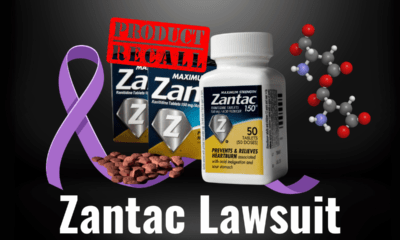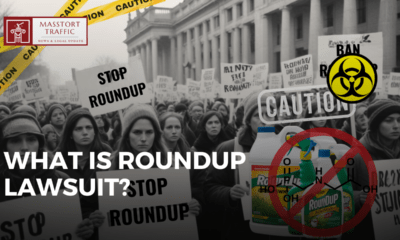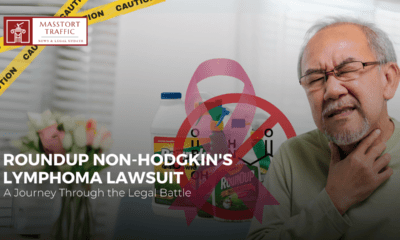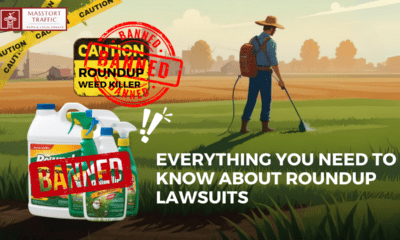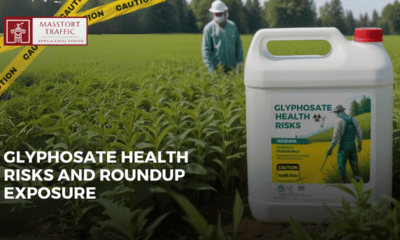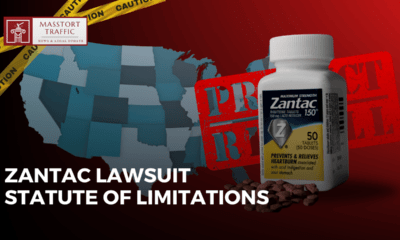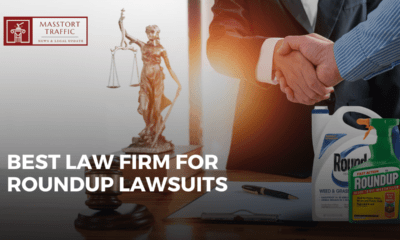Mass Torts Lawsuit
Recognizing the Signs: A Parent’s Guide to NEC Symptoms and the Role of Baby Formula

Necrotizing Enterocolitis (NEC) is a serious illness that primarily affects the intestines of newborn infants, with premature babies being particularly vulnerable. This condition involves inflammation that can damage the delicate intestinal tissue, and early recognition of its symptoms is crucial for timely medical intervention, which can significantly improve a baby’s outcome. This guide aims to provide parents and caregivers with essential information to help them understand and recognize potential signs of NEC Symptoms, especially in relation to infant feeding practices. Being aware of the symptoms and the factors that might contribute to NEC can empower caregivers to seek prompt medical attention when needed.
Table of Contents
Understanding Necrotizing Enterocolitis (NEC)
Necrotizing Enterocolitis is a condition characterized by inflammation of the intestines, potentially leading to the death of intestinal tissue. This primarily affects the large intestine, also known as the colon, and the small intestine. In severe cases, the intestinal wall can weaken, leading to a hole or perforation. This allows bacteria, which are normally present in the intestines, to leak into the abdominal cavity, potentially causing a severe infection.
While the exact cause of NEC remains under investigation, it is believed to arise from a combination of factors. Intestinal immaturity, particularly in premature infants, and the presence of bacteria are thought to play significant roles. The delicate and underdeveloped intestines of premature babies may react differently to bacteria and food, potentially triggering inflammation.
NEC predominantly affects premature infants. Studies indicate that NEC can affect between 2% and 5% of all premature infants, and this number can be as high as 10% in babies weighing less than 1500 grams (approximately 3 pounds, 5 ounces). It is recognized as the most common and serious intestinal disease among premature babies and a leading cause of death related to gastrointestinal issues in this vulnerable population.
While NEC is more prevalent in premature infants, it can also occur in full-term babies, although this is less common. In full-term infants who develop NEC, it is often associated with other health problems, such as congenital heart defects or events leading to low oxygen levels at birth. The higher occurrence in the most premature infants suggests a strong link between the immaturity of their intestinal systems and the risk of developing this condition.

The Potential Connection: Baby Formula and NEC Risk
Research has indicated a significant association between feeding premature infants with cow’s milk-based formula and an increased risk of NEC compared to those who receive human milk. Several studies have demonstrated a lower incidence of NEC in premature babies who are fed an exclusively human milk-based diet. In fact, a report by the U.S. Surgeon General highlighted that premature infants who are not breastfed are at a higher risk of developing NEC. This body of evidence suggests a correlation between cow’s milk-based formula feeding in premature infants and a greater likelihood of developing NEC.
Human milk offers several protective factors that may contribute to a lower risk of NEC. It contains substances that help the baby fight infection and aid in the maturation of intestinal cells, making it easier for premature infants to digest. Breast milk is also rich in bioactive proteins, immunoglobulins, and growth factors that are believed to protect against the development of NEC. Interestingly, research suggests that even partial supplementation of breast milk with cow’s milk-based formula might diminish some of these protective benefits. The components of breast milk appear to play a vital role in supporting the health and development of a newborn’s gut, offering a degree of protection against inflammatory conditions such as NEC.
Certain specific formula brands and products have been mentioned in research and lawsuits concerning their potential link to NEC. These include brands like Similac and Enfamil, along with their various human milk fortifier products. There is also some indication that formula with high osmotic strength might be a contributing risk factor. Furthermore, the way in which infants are fed can also play a role. Rapid or large-volume introduction of enteral feeds has been associated with an increased risk of NEC. However, the evidence regarding the optimal rate of advancement of feeds is not entirely consistent. While cow’s milk-based formulas, in general, have been implicated, it appears that specific formulations and feeding practices, particularly the rapid advancement of feeds, might further increase the risk in susceptible infants.
Recognizing the Early Warning Signs of NEC
Early recognition of NEC symptoms is vital for prompt intervention. Parents and caregivers should be aware of potential changes in their baby’s feeding behavior, abdominal appearance, and stool patterns. Subtle shifts in these areas can be early indicators of gastrointestinal distress.
Changes in feeding behavior might include poor feeding tolerance or a baby refusing to eat. Caregivers might notice that food seems to stay in the baby’s stomach longer than expected. An increase in the amount of fluid left in the baby’s stomach before the next feeding, known as increased gastric residuals, can also be a sign. Vomiting, especially if the vomited fluid is greenish in color (bile), is another important symptom to watch for.
Changes in the baby’s abdominal appearance can also indicate a problem. This might include a belly that looks bloated or swollen (abdominal distension). The baby’s abdomen might also feel tender to the touch. A change in the color of the belly, such as it appearing red, blue, or gray, can also be a concerning sign. In some cases, the loops of the intestines might even be visible through the skin.
Changes in stool patterns are another important indicator. This could involve the presence of blood in the baby’s bowel movements, making them appear bloody or dark. The baby might also experience diarrhea or, less commonly, constipation. The presence of blood in the stool is a particularly alarming sign that often indicates intestinal damage and should prompt immediate medical attention.
In addition to these signs, there are other systemic symptoms that might indicate NEC. These include the baby being unusually tired or less active (lethargy) , experiencing temperature instability, such as having a low or high body temperature , having pauses in breathing (apnea) , or having a slow heart rate (bradycardia). These systemic signs can indicate a more advanced stage of illness or a developing severe infection, requiring immediate medical evaluation.

Progression and Potential Complications of NEC
The early symptoms of NEC can be subtle and may gradually worsen over a period of hours or days. As the condition progresses, the inflammation in the intestines can intensify, leading to tissue damage and eventually the death of intestinal cells, known as necrosis. In severe cases, this tissue death can result in a hole or perforation in the intestinal wall. It is important to note that NEC can progress very rapidly, sometimes within a short period of 24 to 48 hours. This rapid progression highlights the critical need for caregivers to be vigilant for even subtle early signs and to seek immediate medical attention if they have any concerns.
NEC can lead to several serious and potentially long-term complications. These include:
- Intestinal perforation: A hole in the wall of the intestine.
- Severe infection: This can occur in the abdomen (peritonitis) and spread to the bloodstream (sepsis).
- Intestinal strictures: Scarring and narrowing of the intestines can develop as they heal.
- Short bowel syndrome: If a significant portion of the intestine has to be removed due to damage, it can lead to difficulties in absorbing nutrients.
- Liver problems: Prolonged use of intravenous nutrition, which may be necessary when the baby cannot feed normally, can sometimes lead to liver issues.
- Neurodevelopmental disorders: Infants who have had NEC are at an increased risk of experiencing developmental delays and other neurological issues.
- Death: In severe cases, NEC can be fatal.
The potential for these serious and long-term complications underscores the critical importance of early and effective management of NEC.
How Medical Professionals Diagnose NEC
Diagnosing NEC involves a combination of careful observation of the baby’s symptoms, physical examination, imaging studies, and laboratory tests.
During a physical examination, doctors will look for signs such as abdominal swelling, tenderness when the belly is touched, and any discoloration of the abdomen. They may also check for decreased bowel sounds, which can indicate that the intestines are not working properly, or if they can feel a mass in the baby’s abdomen.
Imaging tests play a crucial role in diagnosis. Abdominal X-rays are the primary tool used to confirm NEC. These X-rays can reveal characteristic signs like abnormal gas patterns within the intestinal wall, known as pneumatosis intestinalis. They can also show air in the veins of the liver or free air in the abdominal cavity, which suggests a perforation has occurred. Doctors may order a series of X-rays over time to monitor the progression of the disease. In some cases, an ultrasound of the abdomen may be used as an additional tool to assess intestinal movement, the presence of fluid, the thickness of the bowel wall, and blood flow to the intestines.
Laboratory tests also help in the diagnosis and assessment of NEC. Blood tests can be performed to check for signs of infection, such as an elevated white blood cell count, as well as to assess the baby’s platelet count, acid-base balance (metabolic acidosis), and other indicators of illness. Stool tests may be done to check for the presence of blood, which can be a sign of intestinal damage. The diagnosis of NEC is typically made based on a combination of these clinical findings, imaging results, and laboratory values, as there is no single test that can definitively diagnose the condition.
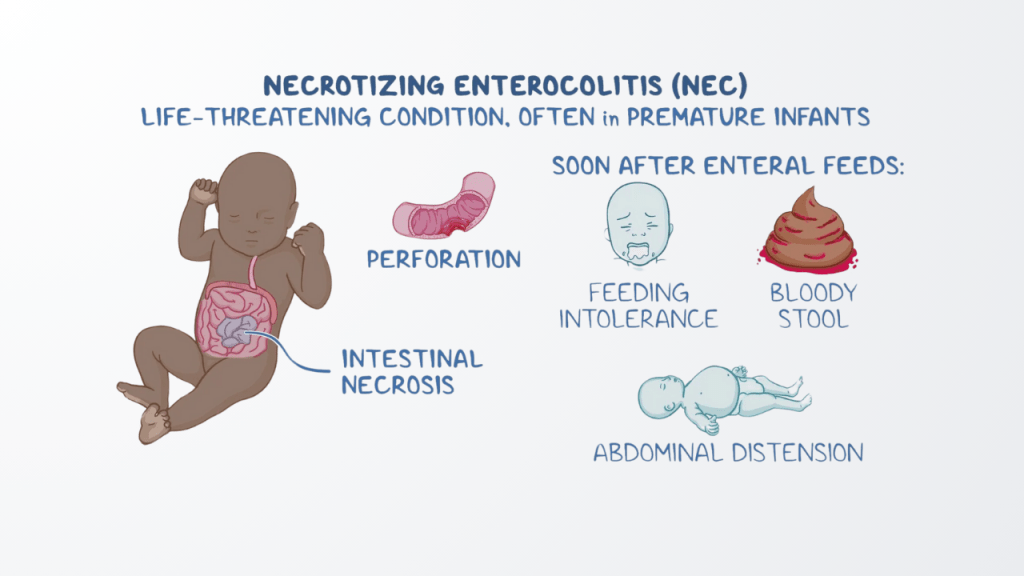
Causes of NEC
The exact cause of NEC is still not entirely understood; however, several risk factors have been identified. Premature birth is the most significant risk factor, along with factors like low birth weight, compromised immune systems, and a formula-fed diet. This brings us to an important aspect: the type of baby formula being used can influence the likelihood of developing NEC.
Recognizing NEC Baby Formula Symptoms
Identifying nec baby formula symptoms early on is vital to ensure your baby’s health. Here are some key symptoms to watch out for:
1. Abdominal Distension
One of the first signs of NEC is abdominal distension, which may appear as bloating in your baby’s stomach. If you notice that your baby’s belly looks swollen or feels hard, it’s crucial to contact your pediatrician.
2. Feeding Intolerance
If your baby is rejecting feeds or experiences vomiting especially after formula feeding, it may indicate a problem. Keep an eye on whether your baby seems more fussy or cranky after feeding.
3. Blood in Stool
Finding blood in your baby’s stool is a clear warning sign. It may appear as streaks or dark red spots. This symptom should prompt immediate medical evaluation, as it can indicate a serious condition like NEC.
4. Lethargy
If your baby seems unusually sleepy or unresponsive, this could be a symptom of NEC. Babies who are lethargic might not feed well and may become increasingly irritable.
5. Temperature Instability
Sudden fluctuations in your baby’s body temperature, particularly if they run a fever, can be a sign of infection or inflammation due to NEC.
6. Rapid Heart Rate
An increase in your baby’s heart rate is another symptom of NEC. Monitoring vital signs is crucial, especially in premature infants, who are at higher risk.
If you notice any combination of these nec baby formula symptoms, consulting a healthcare professional is imperative.
Conclusion
Necrotizing Enterocolitis (NEC) is a life-threatening condition that affects the intestines of newborns, particularly premature infants. Early detection of this illness can make a crucial difference in a baby’s recovery. Parents and caregivers should pay close attention to any changes in feeding behavior, abdominal swelling or discoloration, and unusual stool patterns, including the presence of blood. These symptoms may be early indicators of NEC, especially in babies who are formula-fed.
Because recent studies have suggested a potential link between certain infant formulas and NEC, it is vital that caregivers of formula-fed preemies remain especially vigilant. Prompt recognition and immediate medical intervention can greatly improve the prognosis for babies affected by NEC.
Understanding the risks, identifying symptoms early, and knowing when to act can empower caregivers to protect the health of their infants.
If your child has suffered from NEC after being fed cow’s milk-based baby formula, you may be eligible to take legal action.
Learn more about the NEC Baby Formula Lawsuit and your legal options
Mass Torts Lawsuit
Congress Investigates Uber’s Handling of Sexual Assault Claims

When Congress investigates Uber and its role in handling sexual assault claims, survivors and their families need clarity, reassurance, and a path forward after trauma.
Table of Contents
What does Congress investigates Uber really mean for riders?
Between 2017 and 2022, Uber logged approximately 400,181 reports of sexual assault or misconduct during U.S. trips — or roughly one report every eight minutes. House Oversight Committee+2TorHoerman Law+2
When Congress investigates Uber’s safety practices, it signals that your experience is not isolated — and that accountability may follow.
DID YOU KNOW?
Why Congress investigates Uber: the facts behind the inquiry
Oversight and scrutiny of Uber’s safety protocols
A U.S. House sub-committee chair sent a letter to Uber’s CEO seeking details on how the company:
- screens drivers for past misconduct
- investigates and reports sexual assault complaints
- discloses data to riders and regulators. House Oversight Committee
Such scrutiny means that when Congress investigates Uber, it casts a spotlight on system-wide responsibility — not just the individual driver.
Lawsuits piling up amid safety concerns
Thousands of passengers claim Uber failed to keep them safe—alleging inadequate background checks, lack of video safety features and weak incident response. TorHoerman Law+1
When Congress investigates Uber, it may influence how these lawsuits move forward.
What riders should know about case counts
- The federal multidistrict litigation (MDL) against Uber involves many sexual assault claims. Federal Lawyer
- Uber reported 2,717 serious sexual assault category incidents during 2021–22 in the U.S. Reuters
This means if you were harmed while riding, your claim may be part of broader systemic issues.
If Congress investigates Uber – What this means for you as a survivor
You’re not alone
When Congress investigates Uber, it amplifies the voices of many who suffered similar harm — reinforcing that your experience has broader relevance.
Evidence and claims: why documentation matters
To build your strongest case:
- Keep ride receipts and trip details (date/time, driver name, route). Consumer Notice, LLC
- Preserve medical records, photos, and any reporting you made.
- Note any statements made by Uber or the driver after the incident.
Legal options and next steps
When Congress investigates Uber, legal momentum can shift. For options:
- Consult with a qualified rideshare-injury attorney.
- Ask if your claim can join the MDL or be filed separately.
- Consider whether you were kept in mandatory arbitration (Uber changed this policy in 2018). Helping Survivors
What to ask your attorney when Congress investigates Uber
- Have you handled rideshare assault cases before?
- Will my case join the MDL or be filed alone?
- What evidence do I still need to gather?
- What compensation might be possible (medical costs, trauma, lost wages)?
- How will Congress’s inquiry impact Uber-related cases?
💡 Remember: when Congress investigates Uber, media coverage and legal attention increase — that can benefit your case.
Ready to Take the First Step Toward Justice?
Speak with our trusted legal team today. Your Free, Confidential, No-Obligation Case Evaluation is waiting — and it only takes a minute to begin.
GET YOUR FREE CASE EVALUATION NOW →Prefer to talk now? Call (+1) 210-940-9440 Today
 100% Secure & Confidential
|
100% Secure & Confidential
|
 No Obligation Consultation
No Obligation ConsultationBy submitting this form, you agree to be contacted by a trusted legal partner for a free case review. This does not create an attorney-client relationship. Confidential and secure.
Conclusion
When Congress investigates Uber, it signals a turning point for rideshare safety and accountability. If you or a loved one were harmed during an Uber trip, now is the time to speak with an experienced attorney who understands these emerging legal trends — and can help you fight for the justice and healing you deserve.
EXTERNAL SOURCES & REFERENCES
- U.S. House Committee on Oversight and Accountability – “Mace Seeks Information from Uber on Safety Protocols to Prevent Sexual Assault and Misconduct”
🔗 https://oversight.house.gov/release/mace-seeks-information-from-uber-on-safety-protocols-to-prevent-sexual-assault-and-misconduct/ - Reuters – “Uber Found Not Liable in First U.S. Trial Over Driver Sexual Assault Claims” (October 1, 2025)
🔗 https://www.reuters.com/legal/government/uber-found-not-liable-first-us-trial-over-driver-sexual-assault-claims-2025-10-01/ - Consumer Notice.org – “Rideshare Lawsuits: Legal Action Against Uber and Lyft”
🔗 https://www.consumernotice.org/legal/rideshare-lawsuits/ - Helping Survivors.org – “Uber Sexual Assault Lawsuit: Know Your Rights and Legal Options”
🔗 https://helpingsurvivors.org/rideshare-sexual-assault/uber-lawsuit/
“Justice for your child has a deadline. In Rideshare Sexual Abuse lawsuits, delay equals denial. Act now.”
— Visit MassTortTraffic.com or Call (+1) 210-940-9440
Mass Torts Lawsuit
Choosing the Right Attorney for Your Rideshare Assault Claim

Experiencing an assault during a rideshare is a profound violation of trust. If you are a survivor, finding the right rideshare assault lawyer is the first, crucial step toward healing and holding the responsible parties accountable.
You may feel overwhelmed, confused, and unsure where to turn. You are not alone, and you have legal rights.
This guide will help you understand what to look for in an attorney to ensure your case is handled with the compassion, confidentiality, and aggression it deserves.
Table of Contents
Why You Need a Specialized Rideshare Assault Lawyer
A rideshare assault case is not a typical personal injury claim, like a car accident. It is a complex legal matter that often involves two components: the criminal act of the driver and the corporate negligence of the rideshare company, such as Uber or Lyft.
These multi-billion dollar companies have powerful legal teams dedicated to minimizing their financial responsibility. They may try to argue the driver was an “independent contractor” to avoid liability for:
- Negligent hiring practices
- Failure to conduct adequate background checks
- Ignoring previous complaints against the driver
- Inadequate safety features in their app
You need an attorney who specifically understands these complex arguments and has the resources to fight them. A general practice lawyer may not have the specific experience required to navigate the sensitive nature of sexual assault litigation combined with corporate liability law.
Essential Qualities of the Right Legal Team
When you are vetting potential attorneys, you are looking for a unique combination of skill and sensitivity. This person will be your advocate, and you must be able to trust them with the most personal details of your trauma.
A Proven Track Record with Sexual Assault Cases
This is the most critical factor. Ask any potential lawyer if they have experience representing survivors of sexual assault, specifically.
A trauma-informed lawyer understands:
- Confidentiality: They will know how to protect your privacy, potentially filing the lawsuit using a “Jane Doe” or “John Doe” pseudonym to shield your identity from the public.
- Sensitive Communication: They will know how to discuss the details of your case without causing re-traumatization.
- The “Discovery” Process: They will fiercely protect you during depositions (out-of-court testimony) and fight against defense tactics designed to “blame the victim.”
Your attorney should prioritize your well-being just as much as the financial outcome of your case.
Resources to Challenge Large Corporations
Rideshare companies like Uber and Lyft will not settle a case easily. They will use their vast resources to delay and deny claims.
Your chosen law firm must have the financial standing and investigative resources to:
- Hire industry-leading experts (e.g., security experts, psychologists).
- Conduct deep investigations into the driver’s history and the company’s hiring protocols.
- Manage a complex and lengthy legal battle (litigation) if the company refuses to offer a fair settlement.
A Contingency-Fee Agreement
You should never have to pay any money upfront to get justice.
DID YOU KNOW?
A reputable rideshare assault lawyer will operate on a contingency-fee basis. This means they only get paid a percentage of the compensation they recover for you, after they win your case. If they do not win, you owe them no attorney’s fees.
This structure ensures your lawyer is fully motivated to secure the maximum possible compensation for you.
Understanding the Stakes: Why Your Voice Matters
The trauma of sexual violence is immense. In the United States, 1 out of every 6 women has been the victim of an attempted or completed rape in her lifetime. [Source: https://www.rainn.org/statistics/scope-problem]
When this violence occurs in a situation where you are supposed to be safe—like a rideshare—the sense of betrayal is devastating.
Filing a civil claim is not just about money. It is about holding every responsible party accountable. It is about forcing these powerful companies to change their policies, improve their background checks, and protect future riders. Your case can be the catalyst that prevents this from happening to someone else.
An experienced lawyer helps you seek compensation for damages, which may include:
- Medical bills (present and future)
- Psychological counseling and therapy
- Lost wages and diminished earning capacity
- Pain, suffering, and emotional distress
- Punitive damages (designed to punish the company for gross negligence)
Key Questions to Ask During Your Free Consultation
Most personal injury law firms offer a 100% free, confidential case evaluation. This is your opportunity to interview the lawyer—not the other way around.
Come prepared with these questions to find the right fit:
- Have you specifically handled rideshare assault cases against Uber or Lyft? (Look for specific experience, not just general assault cases.)
- What is your approach to protecting my privacy and confidentiality? (Will they file the case under a pseudonym?)
- Who will be my primary point of contact at the firm? (Will you be speaking to the lawyer you’re meeting, or passed to a paralegal?)
- What is your fee structure? (Confirm it is a contingency-fee.)
- What do you see as the main strengths and weaknesses of my case? (Look for an honest, realistic answer.)
- How will you support me if this case goes to trial?
Trust your intuition. The right attorney will make you feel heard, respected, and believed. If you feel dismissed, rushed, or judged, that is not the right lawyer for you.
Ready to Take the First Step Toward Justice?
Speak with our trusted legal team today. Your Free, Confidential, No-Obligation Case Evaluation is waiting — and it only takes a minute to begin.
GET YOUR FREE CASE EVALUATION NOW →Prefer to talk now? Call (+1) 210-940-9440 Today
 100% Secure & Confidential
|
100% Secure & Confidential
|
 No Obligation Consultation
No Obligation ConsultationBy submitting this form, you agree to be contacted by a trusted legal partner for a free case review. This does not create an attorney-client relationship. Confidential and secure.
Conclusion
You have already survived the unthinkable; you do not have to fight for justice alone. Choosing the right rideshare assault lawyer is the most important decision you can make right now. Do not wait—take the first step to protect your rights today.
External Resources
- RAINN (Rape, Abuse & Incest National Network): The nation’s largest anti-sexual violence organization, offering statistics and support. https://www.rainn.org
- U.S. Department of Justice | Office on Violence Against Women (OVW): Provides federal leadership in developing responses to violence against women. https://www.justice.gov/ovw
- Victim Connect Resource Center: A confidential helpline for all crime victims in the United States. https://victimconnect.org/
“Justice for your child has a deadline. In Rideshare Sexual Abuse lawsuits, delay equals denial. Act now.”
— Visit MassTortTraffic.com or Call (+1) 210-940-9440
Mass Torts Lawsuit
How Leaked Documents Reveal Uber’s Safety Failures
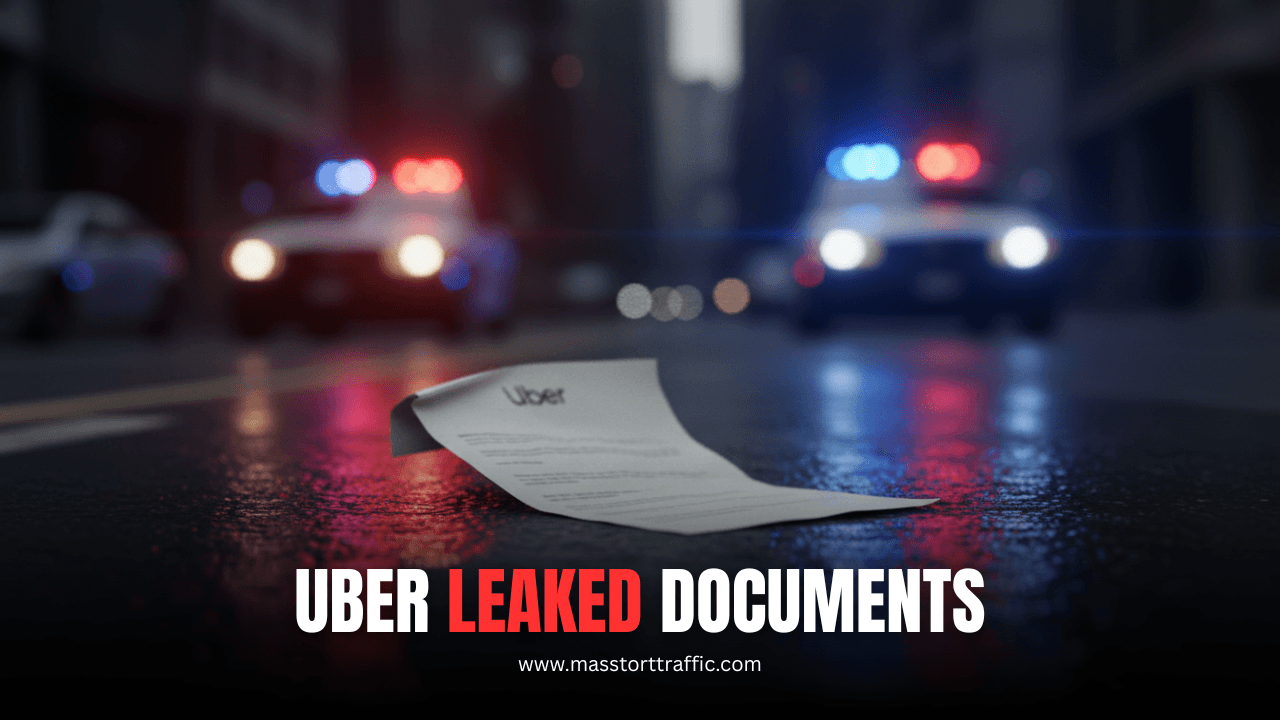
When you order a rideshare, you place your trust—and your safety—in the hands of a massive corporation. You expect to be safe. But the Uber leaked documents, known globally as “The Uber Files,” paint a disturbing picture. They suggest the company may have prioritized aggressive global growth over protecting its passengers and drivers, potentially putting millions at risk.
For those who have been injured, assaulted, or have lost loved ones in a rideshare incident, this news is more than a headline; it’s a profound betrayal. It suggests the harm you suffered may not have been an isolated incident, but the result of a system designed to look the other way.
Table of Contents
Here is the legal blog content, optimized according to your detailed script.
1) META
- Meta Title (≤ 60 chars): Uber Leaked Documents: An Urgent Look at Safety Failures
- URL Slug:
uber-leaked-documents-safety-failures - Meta Description (115–160 chars): The Uber leaked documents reveal shocking safety risks. If you were harmed, you have rights. Get your free, confidential case review now. Call (+1) 210-940-9440.
- Focused Keyword:
Uber leaked documents - SEO TAGS:
Uber leaked documents,Uber safety failures,The Uber Files,Uber lawsuit,Uber assault lawsuit,Uber passenger safety,Uber driver safety,rideshare assault claim,corporate negligence,Uber kill switch,Get a free case review,personal injury lawyer,Uber accident claim,rideshare negligence
2) FULL BLOG BLOCK (998 words)
How Leaked Documents Reveal Uber’s Safety Failures
When you order a rideshare, you place your trust—and your safety—in the hands of a massive corporation. You expect to be safe. But the Uber leaked documents, known globally as “The Uber Files,” paint a disturbing picture. They suggest the company may have prioritized aggressive global growth over protecting its passengers and drivers, potentially putting millions at risk.
For those who have been injured, assaulted, or have lost loved ones in a rideshare incident, this news is more than a headline; it’s a profound betrayal. It suggests the harm you suffered may not have been an isolated incident, but the result of a system designed to look the other way.
What Are “The Uber Files”?
In 2022, a massive trove of more than 124,000 internal Uber records (from 2013-2017) was leaked by a former top lobbyist, Mark MacGann. This leak was shared with The Guardian and the International Consortium of Investigative Journalists (ICIJ), which analyzed the data.
The documents include emails, text messages, and presentations, revealing a corporate playbook that allegedly valued disruption over compliance.
According to the ICIJ, the files detail:
- Aggressive Lobbying: Secret meetings with prime ministers, presidents, and government officials to influence laws in Uber’s favor.
- Bypassing Regulations: Knowingly launching in markets in defiance of local taxi laws and regulations.
- Obstructing Investigations: Using sophisticated technology to thwart police raids and prevent regulators from accessing company data.
[Source: https://www.icij.org/investigations/uber-files/]
This wasn’t just about business competition. This alleged pattern of deception and regulatory evasion directly ties into the company’s approach to safety.
The “Kill Switch”: A Tool to Evade Law Enforcement
One of the most alarming revelations from the Uber leaked documents was the existence of a “kill switch.” This tool, reportedly codenamed “Ripley,” was allegedly used during police raids on Uber’s international offices.
DID YOU KNOW?
When activated, the kill switch would effectively cut access from that office’s computers to the main company servers. This prevented investigators from seeing sensitive data on company operations, safety incidents, or driver information.
Why This Matters for Passenger and Driver Safety
This wasn’t just about protecting trade secrets. Police and regulators investigate serious crimes, including physical assaults, sexual assaults, and fatal accidents.
By allegedly deploying a “kill switch,” the company may have obstructed active criminal investigations. It demonstrates a culture that, when faced with legal oversight, chose to hide information rather than cooperate. For victims seeking justice, this practice is a devastating blow. It raises the question: What else were they trying to hide?
Prioritizing Growth Over Safety: The Real-World Impact
The Uber Files suggest a corporate mindset fixated on “blitzscaling”—growing as fast as possible, whatever the cost. This aggressive expansion allegedly came at the expense of proper driver vetting and passenger safety protocols.
The Link Between Lax Vetting and Passenger Assaults
To fuel its rapid growth, Uber needed millions of drivers, fast. In many markets, this meant pushing back against strict background check requirements, such as fingerprint-based checks, that were standard for traditional taxi services.
While Uber has since updated many of its safety features, the culture exposed in the leaks is critical. The documents show executives were aware of the risks, including violence and assaults, but continued their aggressive tactics.
This alleged failure to prioritize safety has had devastating, real-world consequences.
- In its 2019-2020 U.S. Safety Report, Uber itself disclosed 3,824 reports of the five most severe categories of sexual assault. [Source: https://www.uber.com/newsroom/us-safety-report-2022]
- Thousands of passengers and drivers have reported physical assaults, carjackings, and harassment.
When a corporation is aware of safety risks—such as the risk of assault—but fails to implement reasonable safety measures (like robust background checks), it may be held legally responsible for the harm that results.
The Dangers for Drivers
The leaks also highlight the risks faced by drivers. Uber’s aggressive push into new, sometimes volatile markets, allegedly put drivers on the front lines with little protection. Drivers were classified as independent contractors, which critics argue was a way for Uber to avoid the costs of employment, including safety training, benefits, and liability insurance.
The documents reportedly show that when drivers faced violence, the company’s primary response was often focused on managing the “PR” fallout rather than addressing the root causes of the danger.
How the Uber Leaked Documents Can Impact Your Legal Claim
If you or a loved one was harmed while using Uber, these leaked documents are not just corporate gossip. They are potentially powerful evidence in a personal injury lawsuit.
To win a negligence lawsuit, your attorney must generally prove four things:
- Duty: Uber had a legal “duty of care” to keep you reasonably safe.
- Breach: Uber breached that duty through its actions or inaction (e.g., poor background checks, ignoring complaints).
- Causation: This breach directly caused your injuries.
- Damages: You suffered actual harm (medical bills, emotional distress, etc.).
The Uber Files are most powerful for proving the “breach” of duty. They can help an attorney establish a pattern of negligence. They show what the company’s executives knew, when they knew it, and what they chose to do (or not do) with that information.
This evidence can transform a case from a “he said, she said” incident into a clear demonstration of corporate-wide failure to protect the public.
[Learn More: Understanding Your Rights as a Rideshare Passenger]
What Compensation Can You Seek in an Uber Lawsuit?
While no amount of money can undo the trauma of an assault or a serious accident, a lawsuit can provide the financial resources you need to heal and hold the company accountable.
If you were harmed, you may be entitled to compensation for:
- Medical Expenses: This includes emergency room visits, hospital stays, future surgeries, medication, and psychological counseling.
- Lost Wages: Compensation for the time you were unable to work due to your injuries, as well as any future loss of earning capacity.
- Pain and Suffering: This compensates for the physical pain and emotional distress you endured.
- Emotional Distress: Specifically for the psychological trauma, anxiety, and PTSD that often result from violent assaults.
- Punitive Damages: In cases of extreme corporate misconduct, a court may award punitive damages. These are not meant to compensate the victim, but to punish the company for its reckless behavior and deter it from happening again. The evidence in the Uber leaked documents could be crucial in arguing for these damages.
Ready to Take the First Step Toward Justice?
Speak with our trusted legal team today. Your Free, Confidential, No-Obligation Case Evaluation is waiting — and it only takes a minute to begin.
GET YOUR FREE CASE EVALUATION NOW →Prefer to talk now? Call (+1) 210-940-9440 Today
 100% Secure & Confidential
|
100% Secure & Confidential
|
 No Obligation Consultation
No Obligation ConsultationBy submitting this form, you agree to be contacted by a trusted legal partner for a free case review. This does not create an attorney-client relationship. Confidential and secure.
Conclusion
The Uber leaked documents reveal a troubling history that prioritized profits over people. If you were harmed as a passenger or driver, you deserve justice. Contact a skilled personal injury attorney today to understand your legal rights and take the first step toward holding a powerful corporation accountable.
External Sources
The International Consortium of Investigative Journalists (ICIJ): This source details the “Uber Files” investigation.
- Link:
https://www.icij.org/investigations/uber-files/
Uber’s U.S. Safety Report: This is Uber’s own data on safety incidents, including sexual assault statistics, for 2019-2020.
- Link:
https://www.uber.com/newsroom/us-safety-report-2022
“Justice for your child has a deadline. In Rideshare Sexual Abuse lawsuits, delay equals denial. Act now.”
— Visit MassTortTraffic.com or Call (+1) 210-940-9440

 Mass Torts Lawsuit1 year ago
Mass Torts Lawsuit1 year agoZantac Lawsuit Health Risks, Legal Actions, and Settlement Updates 2024

 Mass Torts Lawsuit1 year ago
Mass Torts Lawsuit1 year agoRoundup Lawsuit 2025: What You Need to Know About Glyphosate Claims

 Mass Torts Lawsuit1 year ago
Mass Torts Lawsuit1 year agoThe Roundup Non-Hodgkin’s Lymphoma Lawsuit: A Journey Through the Legal Battle

 Roundup Weed Killer1 year ago
Roundup Weed Killer1 year agoEverything You Need to Know About Roundup Lawsuit

 Mass Torts Lawsuit1 year ago
Mass Torts Lawsuit1 year agoTop 5 Glyphosate Health Risks: Shocking Facts About Roundup Exposure You Need to Know

 Mass Torts Lawsuit1 year ago
Mass Torts Lawsuit1 year agoHow to Join the Zantac Lawsuit Mass Tort | Zantac Settlement Guide

 Mass Torts Lawsuit1 year ago
Mass Torts Lawsuit1 year agoZantac Lawsuit Statute of Limitations | What You Need to Know

 Mass Torts Lawsuit1 year ago
Mass Torts Lawsuit1 year agoBest Law Firm for Roundup Lawsuits: Do You Qualify to File a Roundup Lawsuit?








